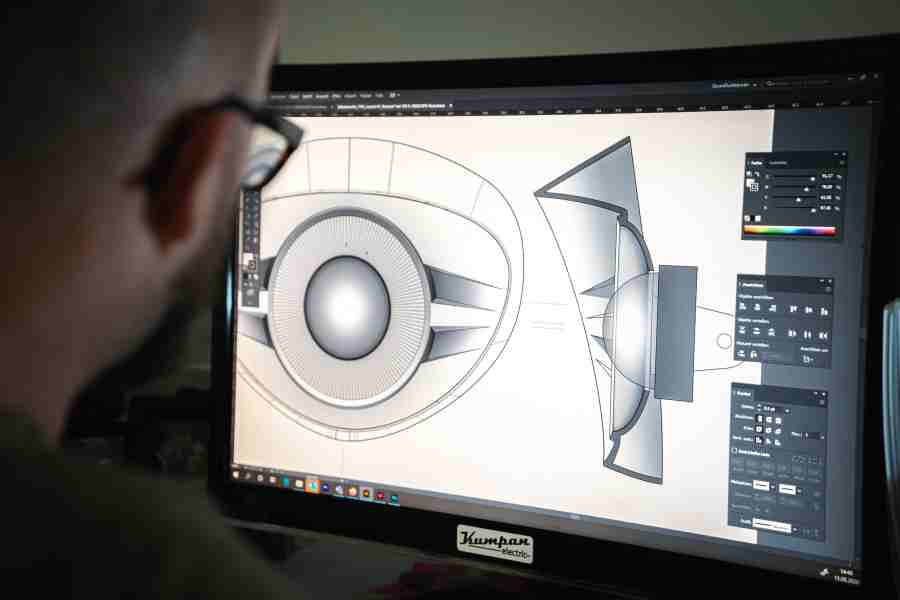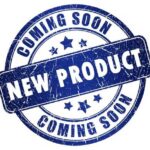Just as most nascent entrepreneurs think that banks are the only way to fund their startups, most entrepreneurs with a new product idea also think they have to develop a manufacturing and distribution company for their invention. For most inventors with a new product idea, they are far better to license their new product idea to a manufacturer than to raise the capital to manufacture and distribute the product on their own.
The skills and mindset that make them successful as an inventor often conflicts with their success as an entrepreneur. In most cases, unless they know how to raise serious money, the majority of new product ideas will never see the light of day.
What is Licensing
For most people with a new product idea or invention, the best path to make money with their product idea is simply to license it. Licensing is the act of granting rights to a company to use your intellectual property to generate revenue for themselves for a fixed period of time, provided some conditions are met such as reaching certain sales volumes. The license is granted in exchange for payment of a fixed fee or royalty on sales by the company. Typically, the company that is interested in licensing a new product idea is already in the business of manufacturing, marketing, advertising, and distributing similar products. The beauty of licensing your idea is that it allows you to benefit from existing infrastructure. Most inventors want to focus on ideation, not running a business.
Understanding Margin vs Profit
Because the royalty may range from 3% to 7% on average, many entrepreneurs think they can make more profit if they do it themselves due to their ignorance of understanding margins and profit. They wrongly believe that while the product might retail for $100 and only cost $30 to manufacture, the $70 margin is their profit. They fail to understand that margin and net profit, which is the margin less all other business expenses, are NOT the same. They think: why would I accept a 5% royalty when I could get 70%?
Gain Access to a Bigger Pie
Additionally, they fail to understand that the licensing partner’s existing infrastructure, such as the distribution channels including agreements with retailers to sell their products, are already in place. They focus on what percentage of the pie they might get rather than accepting a smaller slice of an overall much larger pie that the licensing partner can address given its larger footprint in the market. Rather than focusing on how much they stand to earn if they chose to license their invention, most inventors only seem to estimate the margin percentage for a single sale without taking into account its share of operating expenses and fail to consider the reduction in sales volumes they would have if they did it themselves.
No Patent Required for Your New Product Idea
Moreover, some people naively believe that before they can even think about licensing their new product idea, they must first obtain a non-provisional patent. Getting a non-provisional patent takes time, costs thousands of dollars, and the patent may not be worth the cost and effort in the end. The reason why many patents are often not worth it is that a company can still violate your patent and you need to have the ability to discover the violation and then the means to prosecute them for infringement. If the other party has greater financial resources, you are likely to be drawn into a long and protracted legal battle you can’t afford. Even if you were to win your infringement case, many times the remedy issued by the court may not restore your financial health. Moreover, by the time the court case is settled, a large part of the window of exclusive access to the market will have gone by. While having a patent might get you a better licensing deal, it is not 100% essential in all cases, as Stephen Key, co-founder of InventRight said:
“We see and sign licensing deals weekly. In these agreements, patents aren’t a factor. Nearly always, the idea has been protected with a provisional patent application only. Provisional patent applications are affordable to file, and you can teach yourself how to write your own with the right learning materials, research, time, and effort.”
Stephen Key
If you feel the need to get some patent protection consider a provisional patent. Filing a provisional patent application has few requirements. Provisional patents are faster and easier to file while providing a priority filing date and a “patent pending” status for twelve months. During this time, you can more freely discuss your invention, test its potential, and seek funding while deciding whether to commit more time and money toward the patent. You also retain the right to patent your invention should anyone else try.
Won’t They Steal My New Product Idea?
Many inventors fear that if they try to license their idea to a big company that the company will just steal it from them. They don’t realize that large businesses are often full of ideas but limited in their ability to execute on them.
Additionally, what most inventors don’t take into account is that if a large business steals their idea, and the case went to court, most juries are predisposed to like the little guy and not the large business. Any legitimate business with a reputation to protect would never steal your idea, fearing that the media attention would tarnish its reputation in the eyes of consumers.
Most companies have more to lose from talking to you about your new product idea than you have of them stealing it. For example, the company may already be working on a similar product idea and fears that if the company rejects yours, you may come back later and claim that they stole it
Conducting Preliminary Research
When you have a product idea, you want to license it to a manufacturer you first need to make sure that someone else does not have a patent already. The first step is to search the United States Patent and Trademark Office website or Google Patents for all possible matching claims. If you find anything like your idea, you may as well stop right there because you’ll never be able to get a manufacturer to license it.
Manufacturers can be sued for infringing on another’s patent. Rest assured any company interested in licensing your idea will check on other existence of similar patents before signing any agreement with you.
How to Find Licensing Partners
So, where do I find a licensing partner to build it? The best bet is to simply look up manufacturers of similar products and approach them.
If your new product idea is used for camping, make a trip to your local camping supply store and look for similar or complementary products to yours and write down the names of the manufacturers.
Ask the store manager if they know when and where the next trade show is going to take place and make plans to attend one of their trade shows.
If the store manager is not available, make a trip to your local library and ask the reference desk librarian if they have a list of conventions and trade shows, or do a google search for tradeshows by industry.
Another way to locate manufacturers is by doing a direct google search. Try typing something like “Manufacturers of ________” or “Top brands of ________” in Google’s search bar.
The two of the most popular sites to find manufacturers that may be interested in licensing your idea are thomasnet.com and Alibaba.com which are the leading platforms for product sourcing and supplier discovery.
When you find a likely manufacturer with a good fit, do your homework to examine their track record. Type in their name on Google followed by ‘complaints’ and ‘lawsuits.’ The Internet has made it difficult to hide.
A word of caution, market leaders don’t license many ideas. Also, companies that demand that an invention be patented before they’ll review it are not serious about licensing either. To save time, energy, and money, find companies that have worked with inventors in the past, have a good track record, and embrace open innovation.
Collateral to Pitch Your Idea
Before you consider pitching your idea you need to create a sell-sheet. A sell-sheet is a one-page document with images and text that gives the reader a high-level overview of your idea and how it will benefit the user. It summarizes the most important information about your idea in a concise, easy to comprehend format, without giving away too much.
Include these elements in your sell sheet:
- Product name or logo
- Tagline
- Inventor name, phone number, and email
- Problem the product solves and the solution
- Benefits
- Features
- Instructions
- Images (Computer-Aided Design [CAD Drawing], photography, sketch, etc.)
- Target consumer
- Patent status
- Social media info
Get The Meeting
Once you narrow down your list of manufacturers, you will want to try to set up a meeting with the manager of the appropriate division. If you can’t find the right person by looking at the company’s Website or find their name in Data Axle business database (Formerly called Reference USA), a popular strategy is to call the operator just to get the name of the person as well as the name of the operator and the decision-maker’s admin.
If you call during the busiest part of the day, the operator will be more inclined to provide this information without any questions. Then, call back the next day and say to the operator “Hey [operator’s name] this is [your name], can you put me through to “Good ol [target person’s name] please”. When the operator connects you, you will most likely get the decision-maker’s admin and not the decision-maker. When you speak to the decision-maker’s admin, say something that gives the impression that you know the decision-maker by name, dropping “Hey [admin’s name], this is [your name] from [your company], I have something really exciting to share with [decision maker’s name], is he in?”
If a non-decision maker, such as a person’s admin, asks you to just send them your information and they will present it to their boss on your behalf, don’t do it. Make it clear you will need to present your idea in person.
In some industries, there are licensing agents. Most licensing agents are industry-specific and have an extensive list of decision-makers in their contacts list and work on commission. The more people, with ideas to sell to the company, the more likely that the industry requires an agent to get to the right decision-makers. For example, game companies like Mattel or Hasbro have lots of people wanting to pitch a new game idea and as a result, these companies are reluctant to accept unsolicited ideas except when it comes through a licensing agent.
Your goal is not to talk to the decision-maker on the phone but just to set up a time to have a face-to-face meeting with them. So, make the discussion quick and do not disclose too much over the phone. You want to leave some mystery for the meeting and prevent them from saying no out of hand.
Product Submission Form
Don’t be surprised if the company requests that you sign a Product Submission Form. As we said earlier, big companies have no intention of stealing your idea and will need some assurance that you will not claim they stole it. If the company requires that you sign a product submission form, just sign it.
In comparison, if you get a meeting and request that the company first sign your non-disclosure agreement (NDA), you might as well hang a sign around your neck that says “I’m an Amateur” as the licensing company will surely not sign your NDA.
The Pitch
Finally, the day has come to pitch your new product idea to the decision-maker. Let us assume that your pitch was scheduled for a 30-minute presentation. If you are greeted with “I’m busy so you only have 10 minutes”, I’d recommend that you decline to make your pitch, stating that your new product idea was worth more than the allotted time and that perhaps you may return when they have more time, and then leave. A shortened presentation will undoubtedly cause you to run through your presentation and leave a bad impression. Refusing to share your new product idea in the shortened timeframe will sometimes result in getting a call back to reschedule.
Another problem that may come upon pitch day is that the decision-maker brings his head of new product development or a product manager to the meeting. Many company engineers and directors suffer from the dreaded Not Invented Here (NIH) syndrome. Most will try to find flaws in your idea because NIH is an ego-driven affliction. When your pitch includes product managers or engineers, be sure to play to their egos with lots of compliments and find ways to make them look good in front of the decision-maker.
Remember, your goal is to present your pitch from the other party’s perspective. People don’t want a drill; they want the hole that the drill makes. Don’t sell the drill, sell the hole. As a result, your pitch should include the following eight points:
- There is a real need for this product.
- The improvement over what exists is obvious, apparent, and beneficial.
- The consumer will be convinced of its advantages without any special education.
- The market potential is large and lucrative.
- The market is easily identifiable.
- The market can easily be reached.
- The tooling costs are in line with the profit potential.
- The spread between the true cost and the optimum selling price will allow for an acceptable profit
After your pitch, you will likely be presented with one of four responses:
1, “Thanks, but this product really is not for us.” You should accept this decision, but you may want to get a little more clarification on their rejection so you can improve future pitches.
2, “I like your idea, but I have to show it to my boss” As we stated earlier on, your best bet is not to leave your stuff with a screener. Instead, say “I’m so excited about the product and its potential that I’d be glad to present it to your boss with you at my side.” Often this type of response is related to the person wanting to protect their turf. As a result, you will want to make it very clear that you want to include them in the presentation to give them the ownership they desire.
3, “Can you leave your stuff with us so we can study it?” While it is certainly reasonable for them to think about their decision, it must be time-bounded. You might say “How does a week sound, will that be enough time for you to make your decision?” If, however, they desire to have you leave your stuff for longer so they can do some market testing, you should consider being paid because they tied up the process for an extended period of time. You can agree to a longer review time so they can study and test your new product idea, but you should ask for a non-refundable payment that you will agree to apply to your royalties if the deal goes through.
In either case, if you agree to allow them to study your materials, don’t leave them with your prototype and materials at the end of the meeting. Instead, agree to send them a package for their review. In this way, you can create a paper trail with the list of what you are providing as well as having the opportunity to include a cover letter that restates the points you made in the meeting and the time frame in which they expect to make a decision or return your materials. Then, send the materials overnight to reinforce the sense of urgency and importance.
4, “We love the idea and we would love to move forward.” Reach into your bag and grab your licensing agreement. In his book How to License Your Million Dollar Idea, Harvey Reese has a sample licensing agreement. There are also many free templates available on the Internet or you could have your lawyer write one for you.
Should you be licensing your next great new product idea?












